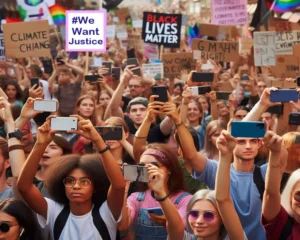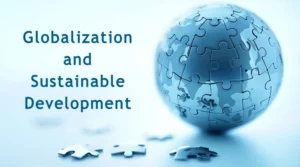Navigating Urbanization: The Rise of Megacities and Their Impact
Urbanization is reshaping the world at an unprecedented pace, bringing with it the rise of megacities that are rapidly transforming regional economies and societies.
With more than half of the global population now living in urban areas and projections estimating that 68% will be urban by 2050, the era of the megacity is well and truly upon us.
In this article, we will discuss urbanization and the rise of megacities: challenges and opportunities. Let’s examine the evolution of the colossal urban centers, their economic potential, environmental challenges, and the sustainable pathways that can help harness their full promise.

The Global Urbanization Trend and Rise of Megacities
Urbanization has fueled the rapid emergence of megacities—urban hubs with populations exceeding 10 million. Today, more than half of the global population resides in urban areas, and this figure is projected to reach nearly 70% by 2050.
Megacities like Tokyo, Delhi, and Shanghai exemplify both the opportunities and challenges of urbanization. They serve as economic powerhouses, fostering innovation, connectivity, and improved access to services, but face issues like overcrowding, inadequate infrastructure, pollution, and socioeconomic disparities.
Smart urban planning, sustainable technologies, and investment in green initiatives can mitigate these challenges while enhancing the quality of life for residents.
As megacities rise, they hold the potential to become models of resilience and sustainability, demonstrating how urbanization can be harnessed for global progress.
According to the United Nations, more than 55% of the world’s population currently lives in urban settings—a figure expected to increase to 68% by 2050 as rural-to-urban migration accelerates worldwide. This rapid urbanization has led to the emergence of “megacities,” typically defined as metropolitan areas with populations exceeding 10 million.
Recent estimates indicate that there are already around 33 megacities globally, and projections show that this number could grow to over 40 within the next decade.
Megacities like Tokyo, New Delhi, Shanghai, and São Paulo continue to serve as pivotal economic and cultural centers. The rising population density provides both the dynamism required for innovation and a challenge for infrastructure.
In Jakarta—the largest metropolitan area in Indonesia—the population is estimated to have reached over 32 million as of mid-2024, making it one of the world’s most prominent examples of urban expansion. Such immense growth has significant implications for planning, resource allocation, and economic strategy across many regions of the world.
Emerging regions like Africa and Asia are witnessing extraordinary urban growth. A recent report from The Guardian projects that by 2035, six African cities—including Luanda, Dar es Salaam, Cairo, Kinshasa, Lagos, and Greater Johannesburg—will each have populations exceeding 10 million. This trend is fueled by a rapidly growing young population, positioning Africa as the fastest urbanizing continent.
In regions where urban infrastructure is still developing, such expansions create both unique challenges and immense economic opportunities.
Economic Opportunities in Megacities
Megacities are the engines of economic growth. Their dense networks of consumers, businesses, and innovative industries create a fertile environment for entrepreneurship and investment.
Oxford Economics forecasts that the population of the world’s 1,000 largest cities will increase by more than half a billion by 2050, largely driven by the continued expansion of megacities. This urban demographic shift fuels the growth of regional GDPs, as seen in cities like Delhi, which is projected to become the largest megacity by 2050 with a population approaching 47 million.
The concentration of talent and capital in megacities translates into vibrant markets for high-tech industries, advanced manufacturing, and service sectors.
For example, Shanghai is not only recognized as China’s most populous urban area but also as a major global financial center where state-of-the-art technology integrates with traditional commerce.
Similarly, New Delhi’s emergence as a central hub in South Asia is drawing multinational investments, driven by its burgeoning start-up culture and significant consumer market.
Furthermore, the economic benefits of urbanization extend beyond pure GDP growth. Dense urban centers promote economies of scale and efficiency, reduce transportation costs through shorter supply chains, and foster innovation through serendipitous interactions among diverse groups of people.
The potential multiplier effect of these advantages means that megacities can lift entire regions by creating jobs and stimulating infrastructure development, from affordable housing initiatives to expansive public transportation networks.
Local governments are increasingly aware of these opportunities and are investing in smart city initiatives to attract further business.
For instance, investments in digital infrastructure, such as high-speed broadband and IoT applications, have begun transforming cities like Bangalore—often dubbed the Silicon Valley of India—into not just tech hubs but also dynamic ecosystems where economic and social innovation can thrive.
The Dark Side of Urbanization: Key Challenges for Megacities
Urbanization, while driving economic growth and modernization, also reveals significant challenges. Overburdened infrastructure struggles to meet demands for transportation, water, and sanitation, resulting in traffic congestion, water scarcity, and waste management crises.
The exponential growth of megacities is not without its challenges. The rapid increase in population density places tremendous pressure on infrastructure, public services, and housing availability.
In many cities, the struggle to keep pace with burgeoning demands has resulted in urban sprawl, traffic congestion, and the proliferation of informal settlements.
A study by the World Weather Attribution group revealed that rapid urbanization in East Africa has exacerbated the impact of extreme rainfall events, intensifying floods and overwhelming already fragile infrastructure. Such events underscore how unplanned expansion and poorly integrated urban growth can compound the adverse effects of climate change.
In cities like Nairobi, where the population has doubled over the past two decades, basic services such as water supply and waste management are often stretched to their limits.
In addition to infrastructure challenges, megacities are also burdened with significant environmental concerns. Air and water pollution, high energy consumption, and the loss of green spaces are critical issues that many megacities face.
Urban areas contribute substantially to global greenhouse gas emissions—even though emissions per capita in cities can sometimes be lower than the national average, the absolute numbers are enormous given the population density.
With predictions that by 2050, urban emissions will grow in tandem with population increases, there is a pressing need for innovative solutions to mitigate environmental degradation.
Social inequality is another persistent challenge. The rapid influx of new residents in search of economic opportunity frequently results in stark disparities between the wealthy and those forced to live in overcrowded, under-resourced conditions.
Informal settlements, which are often characterized by inadequate access to clean water, sanitation, and health services, have become a critical issue in many megacities.
In Africa, for example, urban areas are witnessing unprecedented growth, yet the rate of formal housing developments lags behind, contributing to deepening socio-economic divides.
Sustainable Urban Planning and Environmental Impacts
Addressing the multifaceted challenges of megacities necessitates a shift toward sustainable urban planning and green infrastructure.
Recent initiatives across the globe emphasize the importance of integrating sustainability into every aspect of urban development.
Cities must reinvent their spatial organization to balance the needs of growing populations with environmental stewardship.
One promising approach is the concept of “smart cities,” where technology is deployed to optimize traffic flow, improve energy efficiency, and enhance public service delivery.
In addition, green infrastructure—such as urban parks, green roofs, and sustainable drainage systems—can mitigate the urban heat island effect and help manage stormwater runoff. These solutions not only improve the quality of life for residents but also reduce the carbon footprint of urban centers.
In Jakarta, for instance, authorities are actively working on upgrading transportation systems and investing in flood prevention measures in response to the compounded risks posed by climate change and rapid urbanization.
The Jakarta metropolitan area, with a population exceeding 32 million, serves as a case study of both the opportunities and challenges in modern urban management.
Officials have recognized the need to balance economic growth with environmental resilience by implementing policies that promote public transport, conserve water resources, and expand green areas, despite the pressure of rapid population increase.
Environmental sustainability also involves rethinking resource consumption patterns. As megacities drive regional economies, they also demand enormous amounts of energy and water. Therefore, transitioning to renewable energy sources and implementing energy-efficient technologies across industrial and residential areas is vital.
Studies have shown that cities which invest in energy conservation and renewable energy can not only reduce greenhouse gas emissions but also achieve long-term economic savings. In many cases, such investments create new job opportunities and stimulate local economies.
Furthermore, collaboration between public, private, and community stakeholders is critical for successful sustainable planning.
Integrated policies that link affordable housing, transportation, and environmental management can help create urban spaces that are more resilient to both man-made and natural disasters.
For instance, initiatives in rapidly urbanizing regions of Africa are focused on transforming informal settlements into planned communities with access to basic amenities, ensuring that the benefits of urban growth are shared more equitably.
Read Here: The Impact of Environmental Policies on Urban Development
Future Outlook and Policy Recommendations for Megacities
The future of megacities will largely depend on the ability of policymakers, urban planners, and community leaders to implement innovative, comprehensive solutions that address the interconnected challenges of urbanization.
With global urban populations projected to rise dramatically, strategic investments in infrastructure, technology, and social programs are essential to enhance livability and economic competitiveness.
Policymakers must prioritize robust urban governance frameworks that incorporate data-driven decision making.
Regular monitoring and evaluation of urban metrics—such as population density, access to public services, and environmental quality—will enable authorities to identify emerging issues and respond effectively.
International cooperation and the exchange of best practices are also critical as cities around the world face similar challenges. Global institutions like the United Nations and the World Bank play a crucial role in providing technical assistance and financial resources to support sustainable urban development.
In addition, there is an urgent need to address social disparities within megacities. Governments should invest in affordable housing, healthcare, and education to ensure that the benefits of urban growth are distributed equitably.
Encouraging community participation in urban planning not only leads to more inclusive decision-making but also helps to foster a sense of ownership among residents, which is essential for the successful implementation of long-term solutions.
Technological innovations, such as the use of big data and smart sensors, can be leveraged to optimize urban systems. For example, real-time data on traffic flow and energy consumption can inform dynamic policy adjustments, reducing congestion and lowering energy costs.
Digital platforms can enhance communication between citizens and municipal authorities, ensuring that urban management is both transparent and accountable.
Global reports and recent studies suggest that megacities will continue to be at the forefront of economic dynamism, but their success will depend on a balanced approach that integrates sustainable practices with rapid urban expansion.
As urban areas in regions like Africa and Asia continue to expand, governments must adapt policies to manage this growth responsibly.
Effective urban planning, investments in renewable energy, and the preservation of natural green spaces are not just environmental imperatives—they are also essential to maintaining the economic vitality and social fabric of megacities.
Read Here: The Role of Public Parks in Promoting Social Interaction
Urbanization and the Rise of Megacities: Summary
Urbanization poses challenges like overcrowding, pollution, and strained infrastructure but creates opportunities for economic growth, innovation, and improved access to education and healthcare. With sustainable planning, cities can become hubs of progress while addressing environmental and social concerns effectively.
The rise of megacities presents both unprecedented opportunities and formidable challenges. Their dynamic economies drive innovation and growth, yet the pressures of rapid urbanization demand robust planning and sustainable practices.
Megacities can embrace innovative technologies, sustainable design, and inclusive policies, and can transform from being symbols of urban stress into models of resilience and progress.
The decisions made today will not only affect the future of these colossal urban centers but will also shape the broader trajectory of global development.
As we navigate the complexities of urban growth, a coordinated global effort is needed. Future policies must reflect the need for smart, sustainable, and inclusive urban development. Only through such strategic planning can megacities continue to thrive, serving as beacons of opportunity while overcoming the environmental and social hurdles they face.
Ultimately, the future of megacities is a shared responsibility. With continued innovation, effective governance, and a commitment to sustainable practices, these sprawling urban centers can become hubs of economic prosperity and environmental sustainability—benefiting millions of people around the world.





